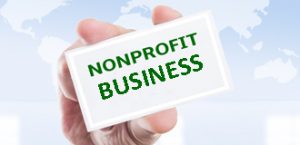As a nonprofit, you know that just being there to provide services can make a big difference in your community. But is there a not-for-profit bank to help you fulfill your mission?
Unfortunately, there are not-for-profit banks but there are for-profit banks that work with nonprofits. There are also companies like Financing Solutions that provide lines of credit to nonprofits that have at least $200,000 in yearly revenue.
Let’s cover why Financing Solutions Nonprofit Line of Credit is valuable for nonprofit organizations and also talk about what your nonprofit should look for when it comes to a credit union, local bank, or national U.S. bank.
Summary
Financing Solutions Nonprofit Line of Credit
Many nonprofits experience the same cash flow problems. You have fixed expenses like payroll, rent, etc. but cash inflows like donations, fundraising, and reimbursements often come at different times of the year.
Although most nonprofits do a great job with planning and budgeting, one delayed reimbursement check can cause havoc on bills that must be paid. For example, payroll must be paid on time or else you run the risk of being fined by the government and even worse, audited.
Financing Solutions, a leading provider of business loans for nonprofits in the form of a 501c3/not-for-profit line of credit, for several years has been one of the few alternative lenders that provides a Line of Credit to nonprofit organizations. The credit line is unique in that it costs nothing to set up and nothing to keep in place. This not-for-profit LOC is also easy to get in place ahead of time which makes it a great cash backup plan for emergencies. Lastly, the FS line requires no collateral or personal guarantees.
The online application takes 2-minutes to fill out and if you decide to move forward with the offer letter you will only need to send a few easy-to-get documents along with approval from your board of directors.
How Can Financing Solutions Provide a Nonprofit Line of Credit when Banks Can’t
It isn’t that a bank can’t provide a nonprofit loan or nonprofit line of credit but that community banks, credit unions, and national U.S. banks are required to follow strict lending rules because they are funded by depositors which in turn is guaranteed by the government through the FDIC. The US Treasury Management Department also provides funding to banks and therefore has bank oversite.
Those lending rules require that a nonprofit must have collateral to back up the financing along with a personal guarantee. Unlike a small business where the owner can put up his own personal collateral, it can be challenging for a not-for-profit organization to do so.
Financing Solutions rated A+ and 5 stars by the Better Business Bureau, is privately funded and as a result, can set its own approval guidelines.
Over the years Financing Solutions has learned that not-for-profit boards of directors and executive directors are highly responsible so Financing Solutions can provide unsecured credit without the collateral and personal guarantees that are required by others.
As long as your nonprofit has at least $200,000 in yearly revenue and the person signing the contract has a 650 or better credit score, then more than likely your not-for-profit will qualify.
What a Not-For-Profit Should Look For In a Bank Account
Nonprofits often start off needing very little banking needs and banking services but as they grow the services needed begin to get more important. It’s a good idea to ask the right questions when you are looking to set up a new nonprofit account with a bank so you get not only what you need now but what you will need in the future. Bank branch managers are usually really helpful and if you sit down with them and ask these four  questions below, you will get a wealth of insight into setting up a nonprofit account.
questions below, you will get a wealth of insight into setting up a nonprofit account.
- What have you seen other nonprofit customers use at your bank?
- What is your bank not that good at versus other financial institutions?
- Tell me about the technology you have now to make banking easier for me.
- What are the costs that will affect me?
Online Banking
If you don’t have online banking now it has become the new standard and not all banks are equal when it comes to technology. Good online banking will allow you to make check deposits right from your phone which makes things a lot easier. For example, during the COVID-19 crisis, this feature has saved a lot of trips to the bank.
Bank to Bank Transfers
Smaller banks and credit unions sometimes struggle with bank-to-bank transfers so if you do a lot of transfers or wires, you should ask your bank what to expect and how much it costs.
Bill Pay Online
Paying Bills online or bill pay isn’t just a convenience. It reduces fraud. Ask your bank about how their bill pays online works and if there are any restrictions.
Viewing Images of Processed Checks
If you get a lot of checks and they are sent to a PO BOX or directly to the bank, having the ability to see online images can be a real help to your bookkeeper and others.
Bank Account Interest Rates
Some of the most asked questions involve savings accounts, business checking accounts,m and money market interest rates for nonprofits. If you find that you often have a lot of cash on hand at certain times of the year talk to your bank about a sweep account. A sweep account gives you the ability to move the money into a higher interest-bearing account.
Credit Cards
Ask your bank if they provide credit cards or debit cards. The advantage of a credit card is that when you use a debit card the funds are immediately drawn from your account whereas, with a credit card, you have a 30-day grace period. Keep in mind when it comes to credit cards, all small business owners and nonprofits have personal guarantees.
ATM Fees
Ask the bank what are the ATM fee policy. $2.50+ is a normal charge if you use an ATM at another bank and those fees really add up.
Merchant Services
Merchant services are a category of financial services. In its most specific use, it usually refers to merchant processing services that enable a business to accept a transaction payment through a secure (encrypted) channel using the customer’s credit card or debit card or NFC/RFID-enabled device. More generally, the term may include:
- Credit and debit cards payment processing
- Check guarantee and check conversion services
- Automated clearing house check drafting and payment services
- A gift card and loyalty programs
- Payment gateway
- Merchant cash advances
- Online transaction processing
- Point of sale (POS) systems
- Electronic benefit transfer programs, such as ration stamps (called food stamps in the U.S.).
Security Policy
Banks are really good at fraud detection so it is always a good idea to sit down with your bank and ask them what you should do to protect your nonprofit from stealing. The ideas that they will give you in regard to your security policy will be time well spent. Nearly 95 percent of all businesses suffer from theft in the workplace and approximately 75 percent of all employees steal from their employers at least once.
Overdraft Protection
Overdraft protection sounds like a good idea but banks make a ton of money from this service. Don’t just assume that you have to have it. If you do a great job with your books then see how you do without this service. The bank officer often has more leeway to reverse overdraft fees than you think and often a nonprofit can just call the bank officer and ask them to reverse the charge.
Commercial Banking versus Credit Unions
Many small nonprofits start working with their local credit union and then upgrade to commercial banking as they grow. However, sometimes it is just worth spending the extra money and going with a commercial bank, to begin with, because of the extra services. Credit Unions are geared more toward personal banking than toward not-for-profit or business banking.
Mobile Banking
You may not be using mobile banking now but you will. It has just become a bigger part of running a small business or nonprofit. Take a look at the bank’s mobile banking app and see what you think. A lot of community banks and credit unions are really weak when it comes to Mobile banking. If you are used to mobile banking from a really good bank you might be terribly disappointed and frustrated by the bank you select for your nonprofit.
ACH
An ACH stands for Automated Clearing House and the ACH is used to move money from one bank to another. Nonprofits sometimes get ACHs from foundations, governments, or other financial institutions. Ask your bank what they charge your nonprofit when an ACH comes in. It’s just a good idea for you to know.
How Could a Not-for-Profit Bank Help Your Organization
Nonprofits have a unique place in our society. They provide services to improve the lives of everyone. In addition, people expect them to perform the same as for-profit small businesses. Regrettably, they don’t have access to the same financial tools that large corporations do.
This is because commercial banks don’t understand 501c3 organizations. They use the same criteria, like collateral and profit margins, to determine whether to grant a nonprofit organization loan.
Some commercial banks do work with not-for-profit organizations. However, if you don’t have at least 5 million in yearly revenue, they will not even consider you.
You should also be aware that if you are lucky enough to get help from a traditional bank, it comes at a steep cost. They will likely dictate your business practices and lock you into some long-term repayment schedule while charging you fees to just set up a line of credit or get a loan.
If there was a not-for-profit bank, these roadblocks might not be an issue. They may realize that while nonprofits must still make payroll and pay bills, they are different.
A not-for-profit bank might offer banking solutions to help you manage uneven cash flow better and operate more efficiently while still achieving your goals. Unfortunately, there is no such institution as a not-for-profit bank.




